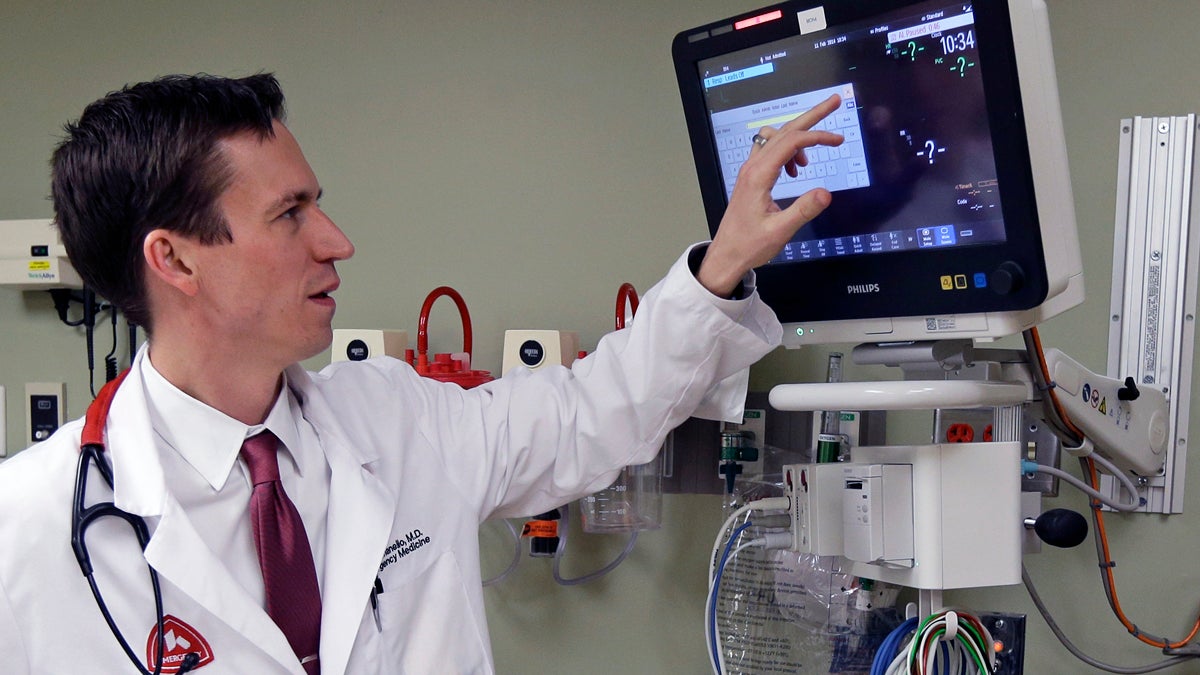Federal push to cut sepsis rates spurs changes in hospital protocols

Dr. Marcus Romanello
Hospitals across the region are spending a more money on education and training about sepsis in hopes of avoiding a possible financial penalty.
Last year the federal government began requiring hospitals to report they ways they recognize and treat sepsis.
Severe sepsis can quickly shut down organs and cause death. It happens when the body’s attempts to fight a local infection go awry, leaving harmful bacteria and toxins in the blood.
Phillip Dellinger, a physician with Cooper University Hospital, said sepsis experts have been trying to get medical centers to pay more attention for years.
“They’d be all fired up to get things done, but the purse strings at hospitals were not as generous as they are now,” Dellinger said.
After a nudge from federal health officials, hospitals are, in turn, nudging their doctors and nurses to follow the government’s care guidelines.
Nationally, about a million patients contract sepsis each year; about 30 to 50 percent of them die.
The federal government’s new recommendations ask medical centers to do four things within three hours.
Aline Holmes — a nurse and senior vice president with the New Jersey Hospital Association — said step one is a blood test to measure something lactate.
“If the result is over four, then it’s a sign that the patient’s organs are failing,” she said. “Then the protocol is to draw blood cultures. As soon as the blood cultures are drawn, then to immediately begin a widespread antibiotic to cover all kinds of bacterial infections.”
Step four is to give a patient a rapid infusion of fluid to keep his blood pressure from crashing.
In the future, the federal government may fine hospitals that don’t follow the care guidelines.
In one year, a collaborative of New Jersey hospitals lowered that state’s self-reported sepsis death rate to about 25 percent from nearly 29 percent. That change represents 400 people, a hospital spokeswoman said.
In the last few years, quality care experts have realized that the bounce-back rate for sepsis is too high.
“Nearly one out of every four sepsis survivors will be rehospitalized within 30 days,” said Mark Mikkelsen, a critical care physician with the University of Pennsylvania Health System.
“We need to prepare patients and their loved one for the possibility that, for at least a period of time, they are at risk for another infection,” he said.
WHYY is your source for fact-based, in-depth journalism and information. As a nonprofit organization, we rely on financial support from readers like you. Please give today.

